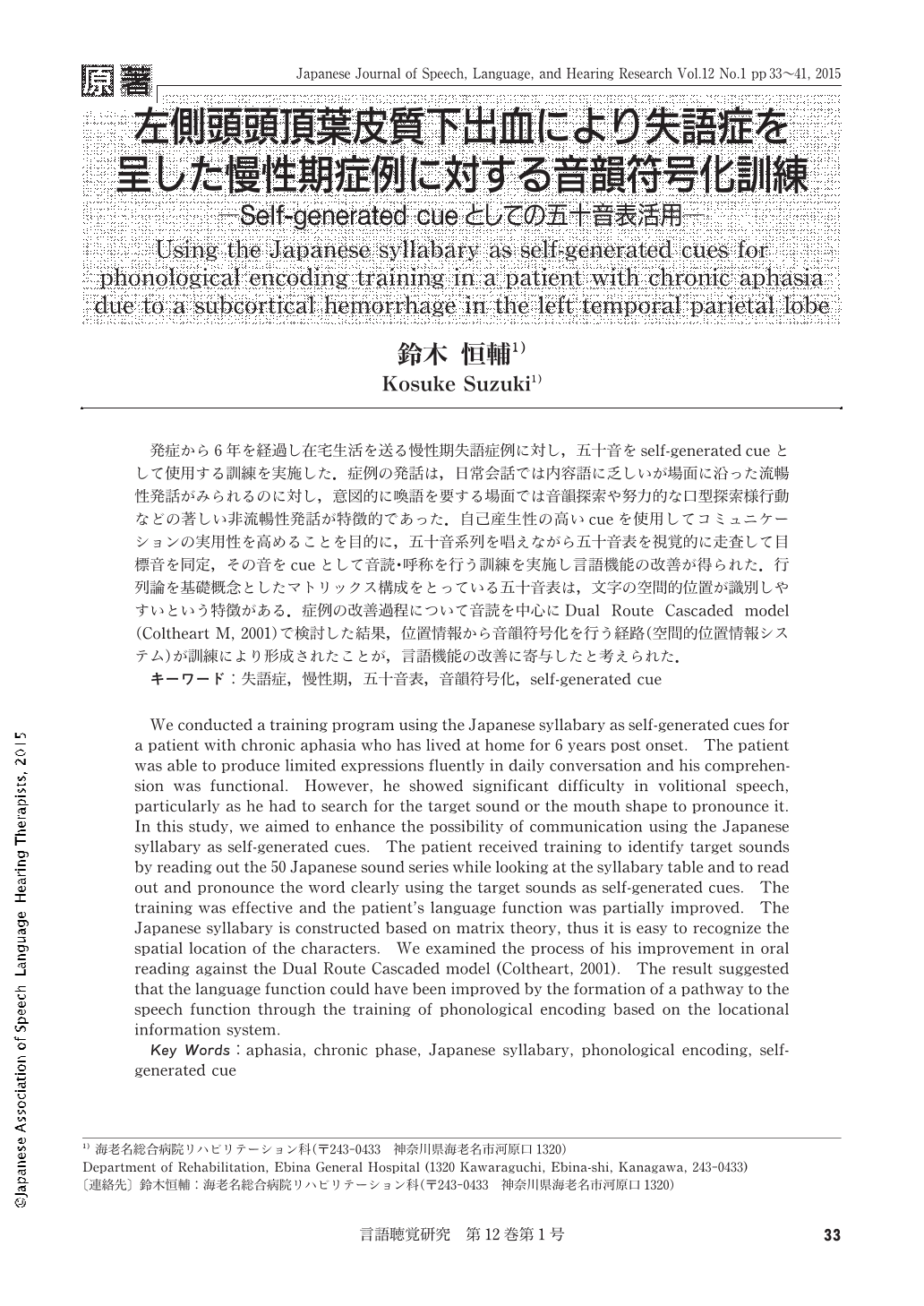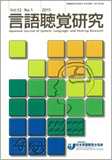Japanese
English
- 有料閲覧
- Abstract 文献概要
- 1ページ目 Look Inside
- 参考文献 Reference
発症から6年を経過し在宅生活を送る慢性期失語症例に対し,五十音をself-generated cueとして使用する訓練を実施した.症例の発話は,日常会話では内容語に乏しいが場面に沿った流暢性発話がみられるのに対し,意図的に喚語を要する場面では音韻探索や努力的な口型探索様行動などの著しい非流暢性発話が特徴的であった.自己産生性の高いcueを使用してコミュニケーションの実用性を高めることを目的に,五十音系列を唱えながら五十音表を視覚的に走査して目標音を同定,その音をcueとして音読・呼称を行う訓練を実施し言語機能の改善が得られた.行列論を基礎概念としたマトリックス構成をとっている五十音表は,文字の空間的位置が識別しやすいという特徴がある.症例の改善過程について音読を中心にDual Route Cascaded model(Coltheart M, 2001)で検討した結果,位置情報から音韻符号化を行う経路(空間的位置情報システム)が訓練により形成されたことが,言語機能の改善に寄与したと考えられた.
We conducted a training program using the Japanese syllabary as self-generated cues for a patient with chronic aphasia who has lived at home for 6 years post onset. The patient was able to produce limited expressions fluently in daily conversation and his comprehension was functional. However, he showed significant difficulty in volitional speech, particularly as he had to search for the target sound or the mouth shape to pronounce it. In this study, we aimed to enhance the possibility of communication using the Japanese syllabary as self-generated cues. The patient received training to identify target sounds by reading out the 50 Japanese sound series while looking at the syllabary table and to read out and pronounce the word clearly using the target sounds as self-generated cues. The training was effective and the patient's language function was partially improved. The Japanese syllabary is constructed based on matrix theory, thus it is easy to recognize the spatial location of the characters. We examined the process of his improvement in oral reading against the Dual Route Cascaded model (Coltheart, 2001). The result suggested that the language function could have been improved by the formation of a pathway to the speech function through the training of phonological encoding based on the locational information system.

Copyright © 2015, Japanese Association of Speech-Language-Hearing Therapists. All rights reserved.


